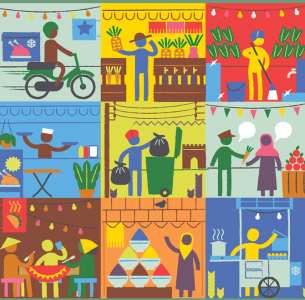Food Safety : Top
Accelerating changes to ensure food we consume is safe and nutritious.
Optimal health and well-being require people to be both well-nourished and free from foodborne disease. Though food safety and nutrition have often been perceived as separate issues, the link between the two is quite strong. For example, 1/3 of diarrheal disease cases – a major determinant of undernutrition – can be attributed to food. Linkages between behaviors and diets also exist, as many of the foods with the highest risk of causing foodborne disease (i.e., they contain microbial or chemical hazards) are also among the most nutritious (e.g., animal-source foods, fresh vegetables).
In 2015, the World Health Organization (WHO) estimated that unsafe food causes 1 in every 10 people to fall ill each year, leading to 600 million cases of foodborne-related illness and 420,000 deaths a year worldwide. Nearly 40% of the disease burden falls on children under five years old. Low- and middle-income countries in South Asia, Southeast Asia, and Sub-Saharan Africa represent approximately 75% of deaths due to foodborne illness, despite representing only 41% of the global population. Foodborne diseases’ economic consequences are also significant; the World Bank estimates $110 billion is lost in productivity and medical expenses each year, impacting national economies, trade, tourism, and ultimately sustainable development. Consumers ill from foodborne diseases may be unable to provide and care for themselves and their family, perpetuating cycles of poverty and hunger.
For food to be safe, it must not cause harm to the consumer when it is prepared or eaten according to its intended use. Accessing safe food is essential to ensure consumers can access the nutritional benefits of their food. For global food safety to be successful, everyone—including public, private, or third sector actors—plays a key role in accelerating changes that ensure food is safe to consume.






